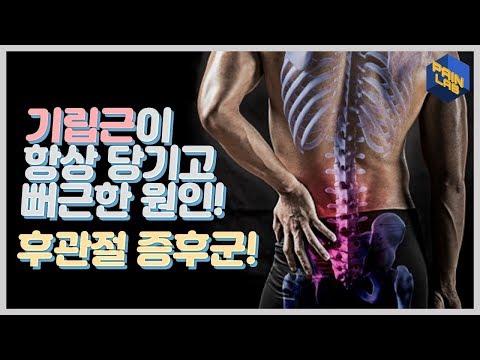기립근 영어로
기립근은 다리를 일으키는데 필수적인 대퇴골 전면에 위치한 대퇴이두근 근층에 있는 근육입니다. 기립근은 대퇴부에서 발달된 가장 큰 근육 중 하나이며, 대퇴골과 아래관절 방향으로 뻗어 나가는 아래앞 다리를 일으키는 역할을 하고 있습니다. 기립근은 근육 기능의 중심부이며, 엄청난 힘과 지속적인 사용을 가능하게 하기 위해 단열성 무게를 제공하고 있습니다.
기립근의 주요 기능은 무엇인가?
기립근은 다양한 일상 활동에서 매우 중요한 기능을 수행합니다. 산책, 오르내리는 계단, 주차장 장소를 찾기 위한 새로운 곳 찾기 등 다양한 일상적인 활동을 수행하는 데 있어서 기립근이 중요한 역할을 하고 있습니다. 또한, 기립근은 걷기, 뛰기, 점프하기와 같은 여러 운동도 가능하게 해줍니다.
기립근 손상의 주요 증상은 무엇인가?
기립근 손상은 다리 근육과 힘들게 일어나는 일로, 기립근 부채꼴에서 단일손상이 인서훈동 느껴질 수 있습니다. 이는 다음과 같은 증상을 일으킬 수 있습니다.
– 통증
– 운동 기능의 줄어듬
– 다리의 약화
– 보행장애
기립근 발생 원인은 무엇인가?
기립근 손상은 다양한 원인으로 인해 발생할 수 있습니다. 갑작스러운 바람 불기, 실종, 혹은 선행상황없는 불쾌한 움직임과 같은 의료적 요소, 근육 부상, 손상이 있습니다. 그 외에도, 긴 시간 동안 피로를 하면서 근육을 사용하거나, 반복적 운동을 하는 것도 근육을 손상시키는 데 영향을 미칠 수 있습니다.
기립근의 진단 방법은 무엇인가?
기립근 손상의 진단은 의료 전문가의 도움을 받아야 합니다. 첫째로, 의료 전문가는 환자의 증상을 평가하는 데 필요한 일련의 질문을 하게 됩니다. 둘째로, 의료 전문가는 검사를 통해 기립근 상태를 확인하고, CT나 MRI를 통해 손상의 정도를 확인합니다.
기립근 치료법 중 어떤 것이 효과적인가?
기립근 손상의 치료법은 매우 다양합니다. 치료 방법은 손상의 정도와 일정 요소에 따라 결정됩니다. 보통은 다음의 요소들을 고려하여 어떤 치료법을 선택할지 결정합니다.
– 손상된 근육의 정도
– 손상된 피부나 근육 주위의 조직
– 손상된 근육 주위의 혈액 공급량
가장 흔한 치료법은 휴식과 물리적 치료입니다. 휴식은 근육이 회복하는 데 필수적입니다. 물리적 치료는 역학 치료, 문제 해결 치료, 억제 치료 등이 포함될 수 있습니다.
물리요법이 기립근 치료에 미치는 영향
물리요법은 근육 손상 치료에 매우 효과적입니다. 가장 흔한 물리 요법으로는 열 및 한과느끼기, 마사지, 중점적인 신전점 치료 등이 있습니다. 또한, 물리 요법은 근육 손상 예방에도 매우 효과적입니다.
기립근 수술 후 유의사항
기립근 수술 후에는 몇 가지 유의사항이 있습니다. 수술 후 다리를 충분히 쉬어야 합니다. 일부 환자가 권장하는 것처럼 단지 휴식을 추천하지만, 다른 환자들은 일부 운동이 가능합니다. 수술 후 가슴을 쓰는 것은 다리 근육을 손상시킬 수 있으므로 피해야 합니다.
기립근 예방 방법
기립근 손상은 보통 매우 생명 위험적인 부상은 아니지만, 큰 불편을 일으키는 부상입니다. 기립근을 예방하는 상황을 최대한 확대하기 위해서는 근력 운동을 하면서 체중 감량과 칼로리 섭취 제한을 권장합니다. 근력 운동을 하는 것은 근육을 훈련시키고 다리 근육을 강화하는 데 매우 효과적입니다. 또한, 척추기립근 여자, 기립근 운동, 기립근 운동 전후, 여자 기립근, 척추기립근 코어 운동, 기립근 스트레칭, 데드리프트 기립근, 기립근 뭉침기립근 영어로 등의 운동을 추천합니다.
기립근 재활 운동과 근력강화 방법
기립근을 강화하려면 일부 근력 운동과 자극을 받는 물리 요법이 필요합니다. 척추기립근 여자, 기립근 운동, 기립근 운동 전후, 여자 기립근, 척추기립근 코어 운동, 기립근 스트레칭, 데드리프트 기립근, 기립근 뭉침기립근 영어로 등의 운동이 근육을 강화하여 근전도를 재생산할 수 있습니다. 물리 치료는 균형 이상 상황에서 척추기립근 운동과 같은 운동을하는 데 도움이 됩니다.
FAQs
어떤 상황에서 기립근 손상이 발생할까요?
기립근 손상은 갑작스런 바람, 실종, 혹은 불쾌한 움직임과 같은 일상적인 움직임, 반복적인 운동 등으로 인해 발생할 수 있습니다.
어떤 증상이 나타날까요?
기립근 손상의 증상은 다리 근육과 힘 드는 일로, 통증, 운동 기능의 줄어듬, 다리의 약화, 보행장애 등이 일어납니다.
기립근 손상을 치료할 수 있나요?
기립근 손상은 여러 치료법이 있으며, 의료 전문가와 상의하여 적절한 치료법을 선택해야 합니다. 일반적인 치료법으로는 휴식과 물리적 치료가 있습니다.
기립근 손상을 예방하기 위해서는 무엇을 해야 하나요?
근력 운동, 자극을 받는 물리 요법, 체중 감량, 칼로리 섭취 제한 등의 방법을 통해 기립근 손상을 예방할 수 있습니다. 척추기립근 여자, 기립근 운동, 기립근 운동 전후, 여자 기립근, 척추기립근 코어 운동, 기립근 스트레칭, 데드리프트 기립근, 기립근 뭉침기립근 영어로를 추천합니다.
어떤 운동이 기립근을 강화하는 데 효과적인가요?
척추기립근 여자, 기립근 운동, 기립근 운동 전후, 여자 기립근, 척추기립근 코어 운동, 기립근 스트레칭, 데드리프트 기립근, 기립근 뭉침기립근 영어로 등의 근력 운동이 근육을 강화하여 근전도를 재생산할 수 있습니다.
사용자가 검색한 키워드: 기립근 영어로 척추기립근 여자, 기립근 운동, 기립근 운동 전후, 여자 기립근, 척추기립근 코어 운동, 기립근 스트레칭, 데드리프트 기립근, 기립근 뭉침
Categories: Top 56 기립근 영어로
기립근이 항상 당기고 뻐근해요ㅠㅠ – 페인랩이 말하는 통증이야기
여기에서 자세히 보기: future-user.com
척추기립근 여자
운동을 하는 이유는 건강과 더불어 몸매를 관리하기 위함이다. 그 중에서도 척추기립근은 높은 발달도와 강도로 인해 몸매를 관리하는 데 필요한 근육 중 하나이다. 척추기립근이란 척추를 지지하는 근육으로서, 척추주위근과 깊게 관여하면서 척추자세를 안정시키고 유지하는 중요한 역할을 한다.
이번 글에서는 척추기립근을 강화하는 방법과 척추기립근이 중요한 이유에 대해 알아보자.
척추기립근이 중요한 이유는 무엇인가?
척추기립근은 몸통을 지지하고 균형을 유지하는데 중요한 역할을 한다. 우리 몸은 척추를 기준으로 균형을 유지하게 되어 있기 때문에, 척추기립근은 몸체를 안정시키고 수직자세를 유지하는 데 큰 역할을 하게 된다.
또한, 척추기립근이 약한 경우에는 척추주위의 무리가 생길 가능성이 높아져, 척추디스크나 척추관절질환 등의 문제가 발생하기 쉬워진다. 척추를 안정시켜주는 척추기립근을 강화하는 것은 척추 건강에 매우 중요하다.
척추기립근을 강화하는 방법은?
척추기립근을 강화하기 위해선, 주위 근육들과 연계적으로 운동하는 것이 중요하다. 그럼 어떤 운동이 척추기립근을 강화하는 데 효과적일까? 아래는 척추기립근을 강화하는 운동들이다.
1. 플랭크
플랭크는 전신을 탄력적으로 유지하면서 척추기립근을 강화시키는 운동이다. 손바닥과 발가락으로 바닥에 지지하고 몸통을 일직선으로 유지하는 것이 중요하다. 아래와 같은 방법으로 수행하면 된다.
– 바닥에 손바닥과 발가락을 붙여준다.
– 팔꿈치를 살짝 구부리고, 어깨 아래로 붙인다.
– 복부 근육을 적근하게 수축하고, 고개를 일직선으로 유지하는 것이 중요하다.
2. 중량 스쿼트
중량 스쿼트는 하체 근력과 척추 기립근을 함께 강화시키는 운동이다. 아래와 같은 방법으로 수행하면 된다.
– 어깨넓이로 발을 벌리고, 양손에 중량을 들어준다.
– 힙을 뒤로 움직인 다음, 무릎을 굽혀 앉아준다.
– 무릎과 발끝이 일직선이 되는 지 확인하고, 일어선다.
3. 버디밴드 체조
버디밴드 체조는 버디밴드라는 고무 끈을 이용한 근육 강화 운동이다. 척추기립근을 강화하는 데 효과적인 동작 중 하나이다. 버디밴드를 사용하지 않고도 수행할 수 있다.
– 바닥에 누워 무릎을 구부린다.
– 손에 다른 손을 얹어서 머리 뒤로 머리카락이 닿도록 한다.
– 허리를 바닥과 차고 고개를 일직선으로 유지한다.
– 팔과 어깨를 바닥에서 떨어지지 않도록 붙인다.
– 우측으로 몸을 돌려주고, 왼쪽으로 몸을 돌려준다.
FAQs
Q1. 척추기립근은 어떻게 강화할 수 있을까요?
척추기립근을 강화하는데 가장 효과적인 방법은 주위 근육들과 연계적으로 운동하는 것입니다. 플랭크, 중량 스쿼트, 버디밴드 체조 등이 척추기립근을 강화하는 데 효과적입니다.
Q2. 척추기립근 강화는 왜 필요한가요?
척추기립근은 몸통을 지지하고 균형을 유지하는데 중요한 역할을 합니다. 척추를 안정시키고 수직자세를 유지하기 때문에, 척추디스크나 척추관절질환 등의 문제를 예방할 수 있습니다.
Q3. 척추기립근이 약하면 어떻게 되나요?
척추기립근이 약해지면 척추주위의 무리가 생길 가능성이 높아져 척추디스크나 척추관절질환 등의 문제가 생길 가능성이 높아집니다.
Q4. 척추기립근을 강화하려면 어떤 운동을 해야 하나요?
척추기립근을 강화하는 데 가장 효과적인 운동은 플랭크, 중량 스쿼트, 버디밴드 체조 등이 있습니다. 척추기립근을 강화하는 동작 중 다양한 종류가 있으니 운동하는 것이 좋습니다.
Q5. 척추기립근 강화를 위한 어떤 근육이 중요한가요?
주위 근육 중에서 가장 중요한 근육은 복직근입니다. 척추기립근과 연계되어 척추를 안정시키고 균형을 유지하는데 중요한 역할을 합니다. 따라서 복직근을 함께 강화하는 것이 좋습니다.
기립근 운동
Standing exercises are highly popular because they promote overall muscle fitness, improve balance, build core strength, and help you burn calories and fat. In this article, we’ll explore why standing exercises are essential for our health, how to perform them correctly, and their benefits.
Why Are Standing Exercises Essential for Our Health?
Standing exercises provide a variety of health benefits, including improving spinal stability, balance, and posture. This form of exercise works to enhance the body’s neuromuscular coordination, which can reduce the risk of falls and accidents.
Furthermore, standing exercises fundamentally align the body to support the natural positioning of the joints. Maintaining proper body alignment and posture can alleviate pain in the back, neck, and shoulders, which are common problems associated with a sedentary lifestyle or poor posture. Similarly, standing exercises help improve muscle imbalances, which often lead to poor posture, back pain, and other musculoskeletal problems.
How to Perform 기립근 운동?
Before starting any exercise regimen, it is critical to perform a thorough warm-up. Taking a few minutes to stretch can prepare your muscles for more intense activity, prevent injury, and improve performance.
Here are some simple standing exercises to get started:
1. Squats
Squats are a perfect exercise for strengthening your quadriceps, glutes, hamstrings, and core muscles. Stand with your feet shoulder-width apart, and place your hands on your hips or cross your arms over your chest. Lower your body as if you’re about to sit in a chair, keeping your back straight, and your knees tracking in line with your toes. Go down until your thighs are parallel with the floor, and then push back up to the starting position. Repeat the squat 10 to 15 times for three sets.
2. Lunges
Lunges are another beneficial exercise for building leg strength and core stability. Stand with your feet hip-width apart, then take a big step forward with one leg to create a 90-degree angle between the thigh and calf on the front leg. The back leg should stay straight, with the heel lifted off the floor. Keep your upper body straight, your chest lifted, and your shoulders relaxed. Return to the starting position, then switch sides and repeat. Aim for 10 to 15 repetitions for three sets.
3. Calf Raises
Calf raises are a simple yet effective exercise for building calf strength, improving ankle stability and balance. Stand with your feet shoulder-width apart and hands on your hips or holding onto a wall or chair. Slowly rise up onto the balls of your feet, keeping your core engaged and your legs straight. Pause briefly at the top, then slowly lower your heels back down to the ground. Repeat 10 to 15 times for three sets.
What Are the Benefits of Standing Exercises?
Several benefits come with incorporating 기립근 운동 or standing exercises into your fitness routine. Here are some of the most notable benefits:
1. Improves balance and stability
Standing exercises, such as lunges and single-leg squats, target the smaller supporting muscles in your body responsible for balance and stability. Strengthening these muscles not only reduces the risk of falls but also enhances performance in athletic activities.
2. Increases muscle strength
By turning into a strength training exercise, standing exercises, like squats, lunges, and calf raises, help build muscle strength. These exercises target the lower extremities and core muscles, leading to improved posture and overall body composition.
3. Enhances cardiovascular fitness
Standing exercises increase your heart rate, which improves cardiovascular health. Squats, lunges, and calf raises are particularly effective for elevating your heart rate and burning calories. This leads to improved endurance and stamina.
4. Reduces lower back pain
Weak muscles in your lower back and surrounding muscles can lead to lower back pain. By strengthening the core muscles, hips, and legs through standing exercises, you can alleviate lower back pain.
5. Improves bone density
Standing exercises put stress on your bones, which can increase bone density and decrease the risk of osteoporosis.
FAQs
1. Can standing exercises help with knee pain?
Yes, standing exercises, such as squats, lunges, and calf raises, can help build strength in the muscles surrounding your knees. This can help alleviate knee pain, making it easier to move and perform daily activities.
2. How many sets of standing exercises should I do for the best results?
Performing three sets of 10 to 15 repetitions of each exercise is a great starting point. However, the ideal number of sets and repetitions depends on your fitness goals. For example, if you’re looking to build muscle mass, you may need to perform more sets and repetitions.
3. What is the best time to perform standing exercises?
Generally, it is best to perform standing exercises when you have plenty of energy. Mornings can be the best time as it is the time when your energy levels are highest, and your body is in an anabolic state geared for muscle repair and growth.
Conclusion
Standing exercises offer several benefits, such as alleviating back pain, enhancing core strength, and improving posture. With a little practice and consistency, these exercises can increase overall strength, leading to better balance and stability. Once you master the basics, you can add in weights and other variations to challenge your muscles further. With so many benefits, standing exercises are an excellent addition to any workout routine.
기립근 운동 전후
기립근 운동 전후, also known as before and after standing muscle exercises, is a crucial form of movement that should be incorporated into everyday life. This form of exercise mainly encompasses legs, hips, and core muscles that collectively work to improve overall health and fitness levels. These muscles are also essential for supporting the body’s weight when standing or sitting, thereby reducing the risks of falls and injuries.
기립근 workouts are very beneficial for people of all ages, especially for elderly people who are prone to balance and stability issues. Improved balance and stability help prevent falls, which is a major cause of serious injuries in the elderly population. The following are some of the benefits of incorporating 와 기립근 exercis into one’s workout routine.
Benefits of 기립근 운동 전후
1. Improved balance and stability
One of the primary benefits of doing 기립근 exercises is improved balance and stability. The muscles used during these exercises, such as those in the legs and hips, are responsible for maintaining balance and stability, especially in elderly people.
2. Increased strength and endurance
기립근 exercises work and strengthens the muscles in the legs, hips, and core, improving their endurance and ability to endure sustained activity. This increased strength and endurance will help in performing everyday activities such as walking, climbing stairs, or holding up the body when standing for prolonged periods.
3. Increased bone density
People with osteoporosis or low bone density can benefit from doing 기립근 exercises. This is because weight-bearing exercise such as 기립근 workouts help to increase bone density, reduce the risk of fractures and falls, and promote healthy bones.
4. Improved joint health
Doing 기립근 exercises is an excellent way to improve joint health, particularly in the hips and knees. These exercises help to strengthen the muscles surrounding the joints, reducing the impact on the joints during movement and mitigating pain associated with conditions such as osteoporosis and arthritis.
5. Reduced risk of injury
By strengthening and toning muscles, 와 기립근 exercises can help to reduce the risk of injuries, particularly those relating to falls and slips. A strong core and good balance, which are developed through these exercises, can also help in preventing other injuries that may result from a lack of coordination.
6. Burn more calories
If you are looking to lose weight, adding 와 기립근 workouts to your exercise routine can help you accomplish your goals. These exercises, especially those that focus on the legs and core, are great for burning calories, making them an ideal choice for those looking to lose weight.
7. Develop a stronger mind-body connection
By paying attention to your body during 와 기립근 workouts, you can develop a stronger mind-body connection, which is crucial for good overall well-being. This connection also helps in preventing injuries and improving performance in other areas of life.
Before vs. After 기립근 운동 전후
There are many differences between before and after 와 기립근 exercises. These differences range from strength and flexibility to balance and endurance, all of which are improved by incorporating these exercises into your daily routine.
Before 기립근 exercises, your core muscles might be weak, meaning that you might have difficulties standing for extended periods, walking, and climbing stairs. However, after doing 와 기립근 exercises, you will notice your muscles are stronger, and these activities will be much easier.
Before 와 기립근 exercises, you might experience pain in your knees and hips, making it hard to move around. However, after consistent exercising, your joints will be much stronger, lessening the pain and discomfort that you once felt.
Before 와 기립근 exercises, your balance may not be stable, and you may struggle with movements involving balance. However, after repetition of the workouts, your balance and stability are greatly improved, making you less likely to fall or have mobility issues.
FAQs
1. How often should I do 와 기립근 exercises?
Depending on your age, health condition, and fitness level, you can vary the frequency of 와 기립근 workouts. However, it is recommended that you do at least 2-3 sets of 10-15 repetitions, with a 30-second to 1-minute rest time in between. Don’t forget to stretch before and after every workout.
2. What are the best exercises for 와 기립근 workouts?
There are many different exercises that you can include in your 와 기립근 workouts, such as Squats, Lunges, and Deadlifts. Other good exercises include Calf Raises, Wall Sits, and Step-Ups. You can also find a variety of articles and YouTube videos with different 와 기립근 workouts.
3. Can 와 기립근 exercises replace Cardio workouts?
No! 와 기립근 workouts are a great addition to your workout routine, but they do not replace cardio workouts. Cardio workouts such as running, swimming, and biking are great for improving cardiovascular health, strengthening the heart, and burning calories.
4. What clothes should I wear to do 와 기립근 exercises?
It is important to wear comfortable and breathable clothes to do any form of exercise, including 와 기립근 workouts. Clothes made with moisture-wicking technology are ideal. Shoes are also an important aspect of your outfit; find shoes that have proper arch support and are comfortable to engage in a variety of different exercise.
5. When is the best time to do 와 기립근 exercises?
The best time to do 와 기립근 workouts is whenever you are most motivated to exercise. Some people find it easy to work out in the morning, while others prefer doing it after work. Whatever your preferred time may be, consistency is key, so always aim for consistency in your workout routine.
Conclusion
기립근 운동 전후 are essential to achieving overall well-being. The benefits of incorporating these exercises into one’s workout routine are numerous, including improved balance and stability, increased bone density, reduced risk of injury, and improved joint health. So, if you find yourself looking to improve your balance and stability, prevent falls, and ensure overall health and well-being, try incorporating 와 기립근 exercises into your routine.
주제와 관련된 이미지 기립근 영어로

기립근 영어로 주제와 관련된 이미지 45개를 찾았습니다.




![다이어트와 모든 운동의 기본! 하체의 힘 & 척추 기립근의 힘 기르기 요가 [초급요가] - YouTube 다이어트와 모든 운동의 기본! 하체의 힘 & 척추 기립근의 힘 기르기 요가 [초급요가] - Youtube](https://i.ytimg.com/vi/OSUKXoJ4ggI/maxresdefault.jpg)







Article link: 기립근 영어로.
주제에 대해 자세히 알아보기 기립근 영어로.
- 척추기립근 – 위키백과, 우리 모두의 백과사전
- 척주기립근 – 나무위키
- 척추 기립근(Erector Spinae) – 네이버 블로그
- 척추기립근 영어로
- 척추기립근은 영어로 erector spine이다 – 수인 마이너 갤러리
- 기립근 – WordReference 한-영 사전
- 🏳️ 🏳️ 🏳️ 🏳️ june00 on Twitter: “와이프한테 자기야 …
- 기립근 – 국내최대의 영어사전, 전문용어, 의학 용어도 OK
- Erector spinae muscles/척추기립근 기능과 구조, 운동에 관하여
더보기: future-user.com/wki
Để lại một bình luận